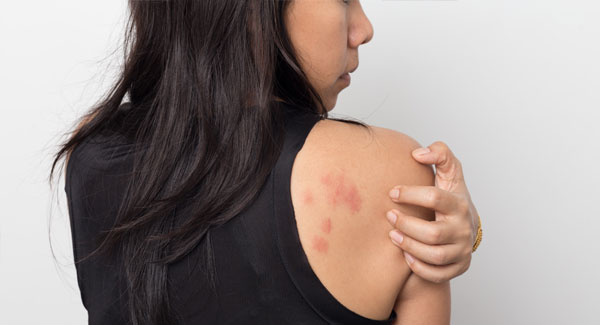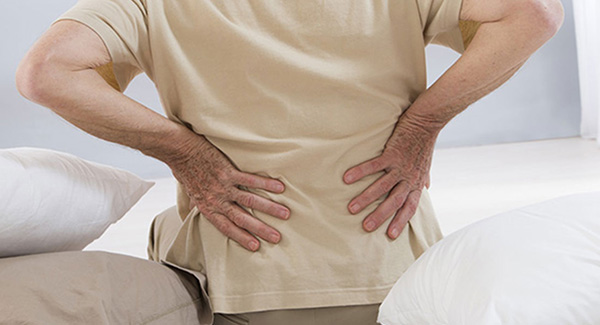Managing Psoriatic Arthritis Flares
Knowing triggers and early warning signs is key.
When Julie Cerrone developed psoriatic arthritis (PsA), she didn’t know what it was. She’d had knee problems and chronic pain for years but wasn’t diagnosed with PsA until she was in her late 20s. Even after the diagnosis, she didn’t immediately connect the profound fatigue she sometimes felt with flaring PsA.
“It’s a bone-chilling fatigue that has me in bed all day,” says Cerrone, a health and wellness consultant in Pittsburgh. “Walking up my front steps feels like I’m hiking Mount Everest."
Flares for Cerrone can also mean painful, swollen joints and widespread discomfort. “It may start in my hands but can travel up my forearm, and all the way to my neck,” she says. "It’s like my bones hurt.”
More Than Skin and Joints
Although Cerrone’s symptoms aren’t unusual, rheumatologist Philip Mease, MD, says flares can vary widely.
“For some people, it may be joints; for others, it’s a worsening of skin disease or spinal pain,” explains Dr. Mease, director of the Rheumatology Clinical Research Division at Swedish Medical Center and clinical professor of medicine at the University of Washington, both in Seattle.
“These things don’t necessarily happen together — sometimes it’s a single joint or a flare of skin alone.” For example, skin lesions may become hot, red, painful or itchy or spread to new areas.
Doctors use clinical tools, such as tender and swollen joint counts, to measure symptoms. But they don’t tell the whole story, says Philip Helliwell, MD, professor of clinical rheumatology at the University of Leeds in the U.K., who also has worked with the Group for Research and Assessment of Psoriasis and Psoriatic Arthritis (GRAPPA) to develop a PsA flare definition that includes both patient and physician perspectives.
Patient definitions of flares are usually much broader than doctors are and include fatigue, trouble sleeping, anxiety, mood problems, stress and a flu-like symptoms.
In time, many patients learn to recognize the first signs of a flare and find ways to minimize them, says Anna Moverley, MBBS, a consultant rheumatologist at York and Scarborough Teaching Hospitals NHS Foundation Trust in the U.K.
“Our data show that as patients learn more about their disease, they get better at self-management” she explains. Pre-flare strategies such as resting more, slowing down during activity and being gentle with joints has shown success.
Being Proactive Can Prevent Flare Triggers
Part of better management is preventing flares in the first place, which means knowing and avoiding triggers.
A common flare trigger, says Dr. Helliwell, is skipping or stopping PsA medications. “If people use their medications as prescribed, they will have fewer flares and less disease activity,” he explains.
Injury is another frequent trigger. “As much as possible, people with psoriasis should avoid skin infections and injuries,” says Kristina Duffin, MD, professor and chair of the department of dermatology at the University of Utah in Salt Lake City. “Skin trauma can cause psoriasis to form at the injury site. Sunburn can really trigger skin flares and is preventable with sun-protective clothing and sunscreen.”
Dr. Helliwell points out that injury-induced flares, called the Koebner phenomenon, can also strike joints. A bang on your heel, for example, can cause painful inflammation at the trauma site.
Experts say keeping track of PsA symptoms and what happens in daily life — your diet, sleep patterns and stress levels — can help pinpoint triggering events. Cerrone is proactive in managing her triggers. She uses a detailed tracking system that she developed, avoids foods she knows cause her PsA to flare and practices yoga and meditation to manage stress — a flare trigger for many people.
She also exercises regularly to help keep joints mobile, reduce stress, improve sleep and prevent pounds from creeping on. (Excess weight can increase disease activity and make it less likely you’ll respond as well to PsA medications.)
Cerrone’s flares happen less often since she’s taken an active role in her care. When they do occur, she uses heating pads to combat morning stiffness, ice to reduce swelling, and a skin cream to relieve inflammation and pain.
What Your Doctor Can Do
Some flares require more than self-management, says Dr. Mease. He encourages patients to check in with their physicians if they’re anxious or unsure about handling symptoms on their own. This tends to occur less often as people learn more about PsA and managing flares.
“In the beginning, communication may need to be more frequent,” he says. “With time and experience, the degree of self-management will likely increase,” says Dr. Mease.
When flares are out of control, your rheumatologist may adjust your medication dose, add another drug, switch to a different drug, or prescribe more powerful topicals or nonsteroidal anti-inflammatory drugs (NSAIDs).
Dr. Duffin adds a note of caution: “Check with your dermatologist before trying anything new. Sometimes treatments that are good for psoriatic arthritis aren’t necessarily great for psoriasis.” That’s especially true of corticosteroids, which can calm arthritis but cause psoriasis symptoms to flare.
Being proactive about your care, making healthy lifestyle choices and having open communication with your doctor will improve your odds of minimizing flares.
Diagnosed With Psoriatic Arthritis?
Get the latest news and tips about living with Psoriatic Arthritis in the Living Your Yes! e-newsletter.



